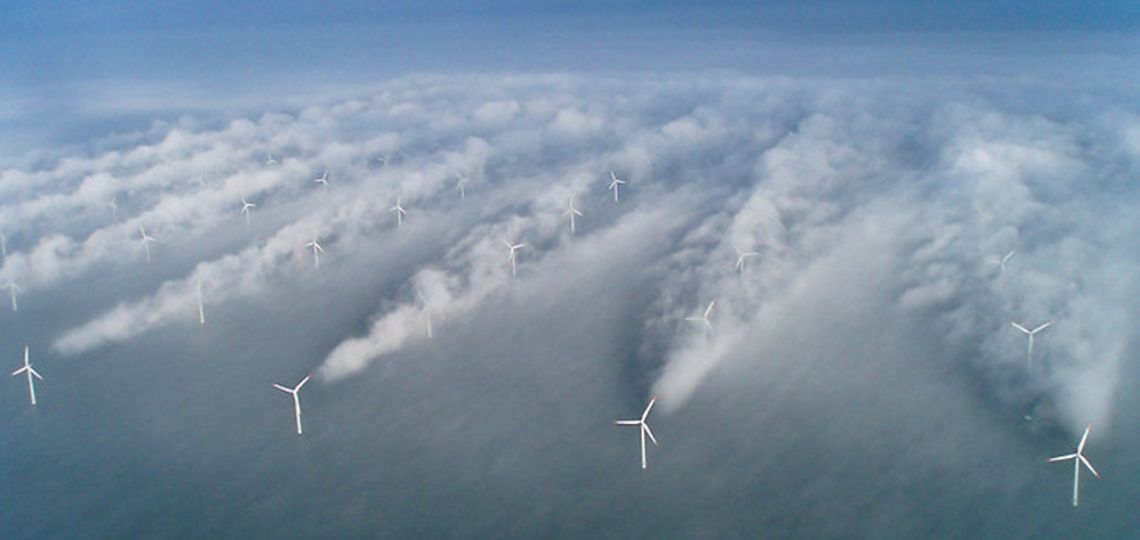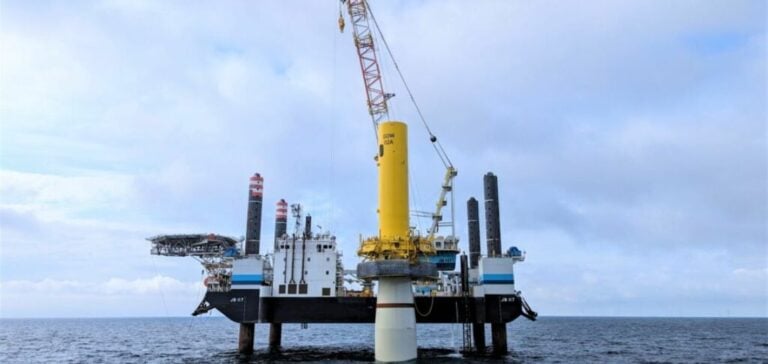Orsted unveils its first project to develop one of the world’s largest renewable hydrogen plants: SeaH2Land. The aim is to meet industrial demand in the Netherlands and Belgium by developing green hydrogen. The green electricity needed to produce the renewable hydrogen will come from the construction of additional offshore wind turbines.
Orsted to meet industrial demand for hydrogen
Using the resources of the North Sea Port cluster
SeaH2Land is a project to develop a vasthydrogen network. It should link electrolysis to major industrial demand.
This would be via a regional cross-border pipeline in the North Sea of around 45 km. It will cover the North Sea port area from Vlissingen-Oost in the Netherlands to Gent in Belgium.
Indeed, the North Sea Port hub is now one of Europe’s largest fossil hydrogen production and demand centers. 580,000 tonnes of fossil hydrogen are exchanged here every year.

SeaH2Land plans 1 GW of renewable hydrogen by 2030
With the rise of decarbonation, industrial demand could reach around 1,000,000 tonnes by 2050. This is equivalent to around 10 GW of electrolysis.
And thanks to this project, Orsted aims to develop a 1 GWgreen hydrogen production facility by 2030. If completed, the electrolyser will convert around 20% of the region’s consumption into renewable hydrogen.
Several projects are currently under development in the region on the sites of industrial players. For example, the 150 MW electrolyser planned by Zeeland Refinery also needs to be connected to the grid.
Partnership with ArcelorMittal, Yara, Dow Benelux and Zeeland Refinery
The Smart Delta Resources (SDR) industrial partnership.
The green electricity needed to produce renewable hydrogen is expected to come from the construction of additional large-scale offshorewind turbines. To this end, the region’s leading industrial companies are supporting the development of regional infrastructure. ArcelorMittal, Yara, Dow Benelux and Zeeland Refinery have joined forces to form the Smart Delta Resources (SDR) industrial partnership.
Yara, in consortium with Orsted, and the Zeeland refinery, have each announced plans to produce medium-sized renewable hydrogen at their sites. And Dow has been exporting hydrogen to Yara since 2018, thanks to the world’s first conversion of a gas pipeline to hydrogen.
Extending the 380 kV high-voltage network
In addition, the cluster strategy proposes to extend the 380 kV high-voltage network. And to meet the electrification needs of industry south of the Scheldt.
This would enable GW-scale electrolysis and offshore wind landing zones on both sides of the river. The area would then become a veritable energy hub.
Orsted contributes to the Dutch energy transition
GW electrolyser directly linked to the new 2 GW offshore wind farm
In this context, Orsted is proposing to connect the GW electrolyser directly to a new offshore wind farm. The latter is 2 GW in size and is located in the Dutch North Sea.
The action plan is in line with the ambitions of the Dutch authorities. This offshore wind farm could well be built in one of the zones in the southern part of the Dutch exclusive economic zone.
Achieving targets with government support
According to Steven Engels, General Manager of Orsted Benelux, governments must support this project:
“By setting up a dedicated support mechanism and a renewable hydrogen program coupled with offshore wind. This should support the industrial downsizing needed to reduce the cost of renewable hydrogen.”
SeaH2Land will help the Netherlands achieve its target of 3 to 4 GW of electrolyser capacity by 2030.






















